Collecting diecast cars is a passion shared by enthusiasts around the world, but a common question often arises: are 1/32 scale diecast cars worth collecting? This guide aims to explore the unique appeal of 1/32 scale diecast cars, comparing them to other scales, examining their detail and accuracy, and offering insights into starting and displaying a collection. Whether you’re a seasoned collector or new to the hobby, understanding the advantages of 1/32 scale models will help you appreciate why they hold a special place in the world of diecast car collecting.
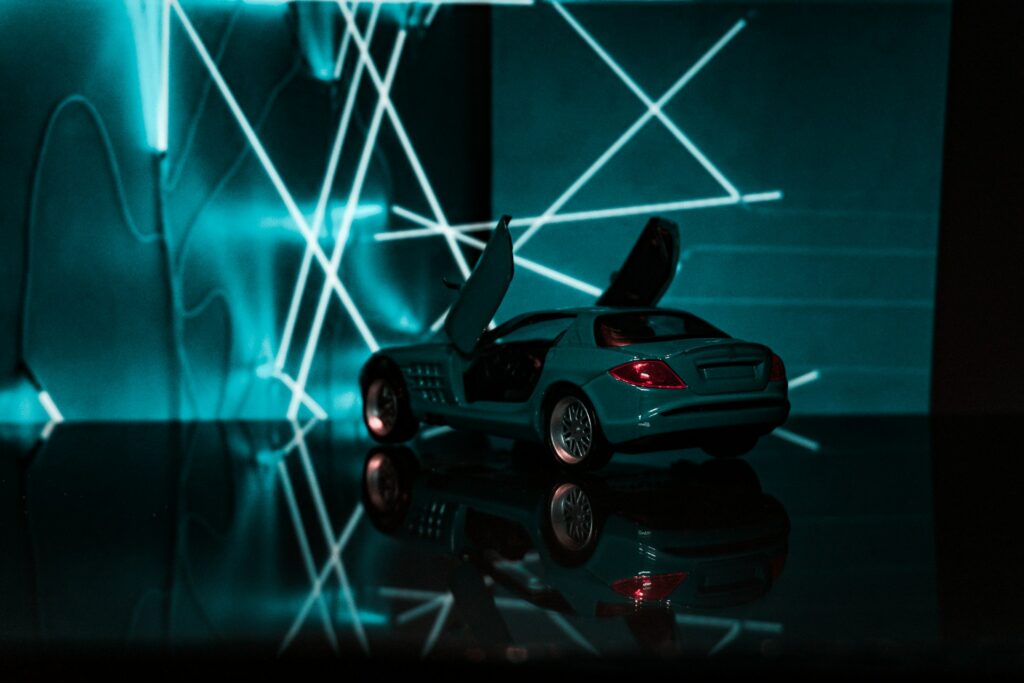
What Makes 1/32 Scale Diecast Cars Unique?
1/32 scale diecast cars hold a special place in the world of model car collecting, distinguished by several unique characteristics that appeal to collectors and enthusiasts alike.
Perfect Balance of Size and Detail
One of the most notable features of 1/32 scale diecast cars is their balance between size and detail. These models are large enough to allow for a high level of detail, capturing the intricate features of the original vehicles, yet small enough to be conveniently displayed and stored. This scale allows for realistic interiors, accurately reproduced exterior features, and functional elements such as opening doors and hoods, providing a satisfying and immersive experience for collectors.
Variety and Diversity
The 1/32 scale is popular among manufacturers, resulting in a wide variety of models available in this size. Collectors can find everything from classic cars and modern sports cars to trucks and specialty vehicles. This diversity means that whether you are interested in vintage automobiles, contemporary models, or unique and rare cars, there is likely a 1/32 scale diecast version available.
Enhanced Display Options
Due to their manageable size, 1/32 scale diecast cars offer numerous display options. They can be arranged in detailed dioramas or displayed individually on shelves or in display cases. Their size allows collectors to create elaborate scenes or themes, adding a dynamic and visually appealing element to their collections.
Affordable Entry Point
Compared to larger scales like 1/18, 1/32 scale diecast cars are generally more affordable, making them an excellent entry point for new collectors. Despite their lower cost, these models do not compromise on quality and detail, providing a satisfying collecting experience without the need for significant financial investment.
Playability and Collectibility
While primarily aimed at collectors, 1/32 scale diecast cars also retain a level of playability that appeals to younger enthusiasts. Their robust construction and functional features make them suitable for gentle handling and play, bridging the gap between a toy and a collectible. This versatility increases their appeal across different age groups and interests.
Historical and Cultural Representation
Many 1/32 scale diecast cars represent iconic vehicles from different eras and cultures. Collecting these models can be a way to preserve and appreciate automotive history, understanding the evolution of car design and technology. This aspect adds an educational and nostalgic dimension to the hobby, as each model can tell a story about its time and place.
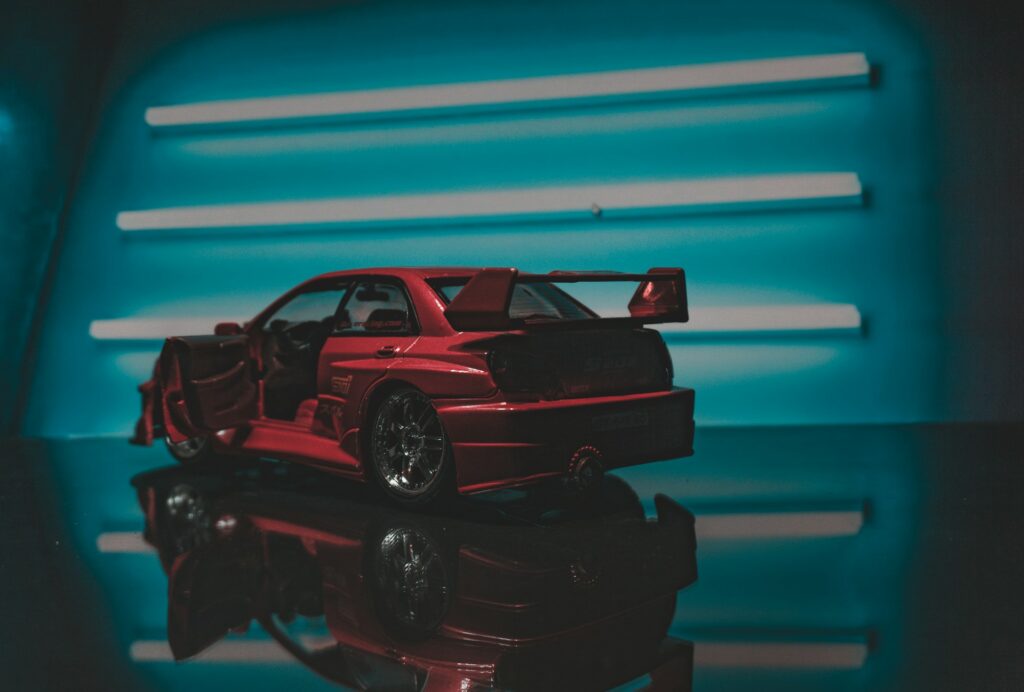
How Do 1/32 Scale Diecast Cars Compare to Other Scales?
When considering the world of diecast car collecting, understanding how 1/32 scale models compare to other scales is crucial. Each scale offers its own set of advantages and characteristics, influencing a collector’s decision based on preferences for detail, size, price, and display options.
Detail and Realism
1/32 scale diecast cars strike a balance between detail and size. They are small enough to be conveniently displayed and stored, yet large enough to capture significant details of the original vehicles. Compared to smaller scales like 1/64, 1/32 models can incorporate more intricate features, such as detailed interiors, realistic paint jobs, and functional elements like opening doors and hoods. However, they may not achieve the same level of hyper-detail seen in larger scales like 1/18 or 1/12, which can include even more precise and minute details due to their larger size.
Size and Storage
The 1/32 scale is an ideal middle ground in terms of size. Smaller scales, such as 1/64, are much more compact and easier to store in large quantities, making them suitable for collectors with limited space. On the other hand, larger scales like 1/18 or 1/12 require more space for both display and storage. The 1/32 scale offers a manageable size that allows collectors to display a reasonable number of models without requiring excessive space, making it a practical choice for many.
Affordability
When it comes to cost, 1/32 scale diecast cars are generally more affordable than larger scales. Larger models, such as those in 1/18 scale, often come with a higher price tag due to the increased amount of material used and the finer details they can incorporate. Conversely, smaller scales like 1/64 are typically cheaper, but they lack the detailed features that can make a model car truly captivating. The 1/32 scale provides a good compromise, offering a detailed and high-quality model at a more accessible price point.
Variety and Availability
Different scales cater to different segments of the market. The 1/64 scale is very popular among manufacturers, leading to a vast array of models available, from common vehicles to rare and exotic cars. The 1/18 and 1/12 scales are often favored by collectors looking for highly detailed and accurate reproductions of specific vehicles, often including luxury and sports cars. The 1/32 scale, while not as widely represented as 1/64, still offers a diverse range of models, including classic cars, modern vehicles, and specialty vehicles, providing ample choices for collectors.
Display Options
Display options vary significantly between scales. Smaller scales like 1/64 can be displayed in large collections, often using cases or shelves that accommodate many models. Larger scales such as 1/18 require more substantial display space and are often showcased individually or in smaller groups to highlight their detail. The 1/32 scale allows for flexible display arrangements. Collectors can create detailed dioramas, thematic collections, or simply showcase individual models without needing an extensive amount of space.
Playability
While diecast cars are primarily collected for display, playability can also be a consideration, especially for younger enthusiasts. Smaller scales like 1/64 are often more robust and suitable for play, while larger scales like 1/18, with their delicate details, are typically more fragile. The 1/32 scale offers a good compromise, with models that are sturdy enough for careful handling and play, yet detailed enough to satisfy the discerning collector.
Historical and Educational Value
Each scale offers different opportunities for educational and historical exploration. Smaller scales, due to their variety, can provide a broad overview of automotive history. Larger scales, with their greater detail, allow for a deeper appreciation of specific models and their historical context. The 1/32 scale offers a balanced approach, providing enough detail to appreciate the design and history of each vehicle while also offering a wide range of models to explore different eras and styles in the automotive world.
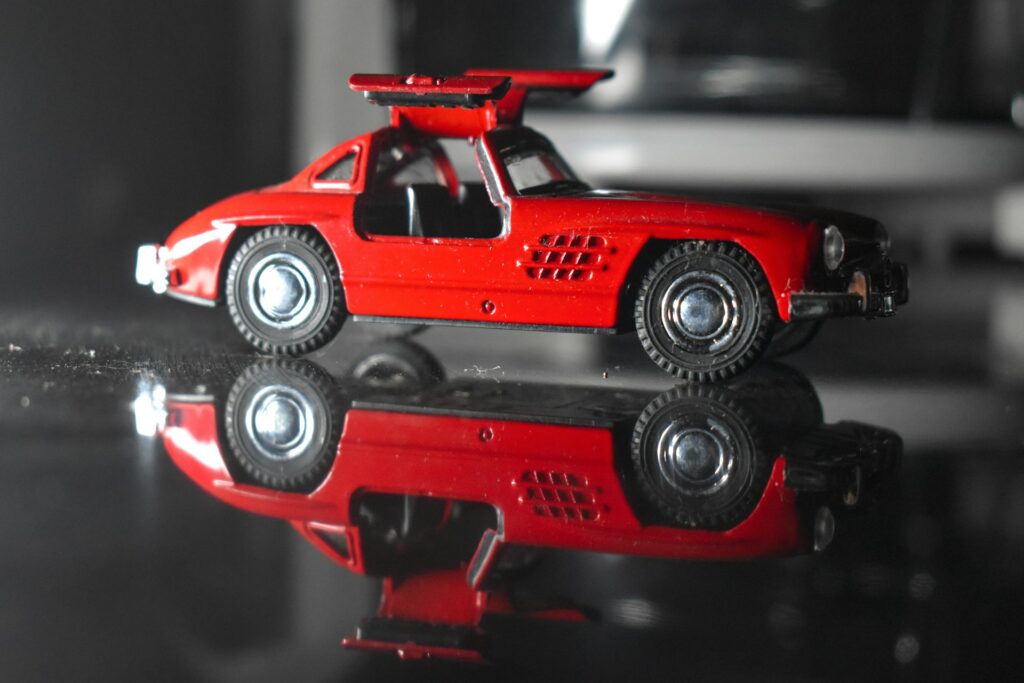
Are 1/32 Scale Diecast Cars Detailed and Accurate?
When evaluating the appeal of 1/32 scale diecast cars, one of the most critical factors is their level of detail and accuracy. Collectors often seek models that not only replicate the exterior of their favorite vehicles but also capture the essence of their design, craftsmanship, and historical significance.
Exterior Details
1/32 scale diecast cars are renowned for their impressive exterior detailing. Despite being smaller than larger scales like 1/18, these models often feature accurately replicated body shapes, intricate grilles, realistic headlights, and carefully painted logos and emblems. The paintwork is typically high quality, with smooth finishes that mimic the original car’s luster. Additionally, features such as side mirrors, antennae, and even windshield wipers are often included, contributing to the overall realism.
Interior Features
One of the standout aspects of 1/32 scale diecast cars is the attention to interior detail. While smaller scales may compromise on interior features, 1/32 models frequently include detailed dashboards, seats, and steering wheels that reflect the actual design of the full-sized vehicle. In some cases, you may find realistic upholstery textures, gear shifters, and even detailed instrument panels. This level of detail allows collectors to appreciate not just the exterior beauty but also the craftsmanship of the vehicle’s interior.
Functional Elements
Many 1/32 scale diecast cars come with functional elements that enhance their authenticity. These can include opening doors, hoods, and trunks, allowing collectors to explore the interior and engine compartments. The inclusion of these moving parts adds a layer of interactivity and realism that is often missing in smaller scales. For instance, opening the hood might reveal a meticulously detailed engine, complete with wiring and other components, mirroring the actual car’s mechanical intricacies.
Accuracy to Original Designs
In terms of accuracy, 1/32 scale diecast cars are typically modeled after precise specifications of the real vehicles. Manufacturers often use detailed blueprints and photographs to ensure that every aspect of the car is replicated as faithfully as possible. This attention to detail means that everything from the car’s dimensions to its unique design features is accurately captured. Whether it’s a classic muscle car, a sleek sports car, or a vintage automobile, 1/32 scale models strive to be true to their real-life counterparts.
Paint and Decals
The paint and decals on 1/32 scale diecast cars are another area where these models shine. The paintwork is often done with multiple layers to achieve a deep, glossy finish that resembles the original car’s appearance. Decals and tampo printing are used to add smaller details like racing stripes, sponsor logos, and other markings. These applications are done with precision to ensure that the colors are vibrant and the lines are sharp, further enhancing the model’s authenticity.
Materials and Build Quality
The materials used in 1/32 scale diecast cars contribute significantly to their detailed and accurate appearance. High-quality diecast metal is commonly used for the body, providing a solid and durable structure. Plastic components are also utilized for parts like windows and interior features, chosen for their ability to be molded into detailed shapes. The combination of these materials results in a model that is both robust and highly detailed.
Historical and Cultural Representation
For collectors interested in the historical and cultural significance of vehicles, 1/32 scale diecast cars offer a way to explore different eras and styles of automotive design. These models often represent iconic cars from various decades, allowing collectors to own a piece of automotive history. The accuracy of these models helps to preserve the legacy of these vehicles, offering a tangible connection to the past.
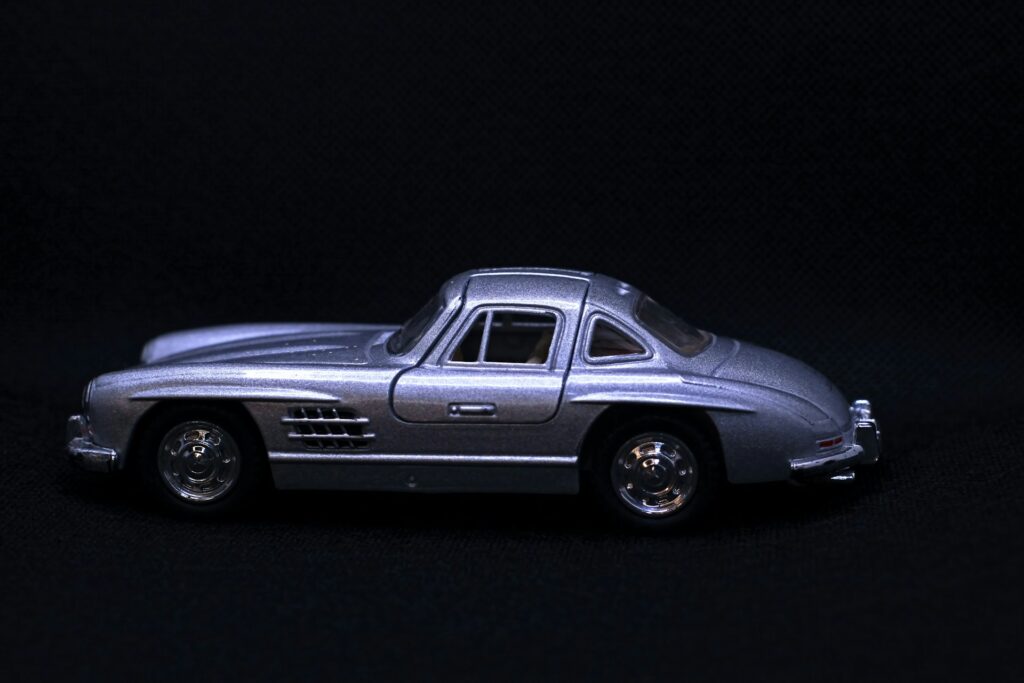
What Are the Advantages of Collecting 1/32 Scale Diecast Cars?
Collecting 1/32 scale diecast cars offers numerous advantages that make this hobby both enjoyable and rewarding.
Balance Between Size and Detail
One of the primary advantages of 1/32 scale diecast cars is their balance between size and detail. These models are large enough to incorporate intricate details, including realistic interiors, functional doors, and accurately replicated exteriors. Yet, they are small enough to be easily displayed and stored. This scale allows for a high level of detail without requiring the extensive space needed for larger models like those in 1/18 or 1/12 scales.
Affordability
1/32 scale diecast cars are generally more affordable than their larger counterparts. While still offering significant detail and quality, they are often priced within reach of a broader audience. This affordability makes them an excellent entry point for new collectors who might be hesitant to invest heavily in a new hobby. It also allows experienced collectors to expand their collections without a significant financial burden.
Display Versatility
Due to their manageable size, 1/32 scale diecast cars offer versatile display options. Collectors can create detailed dioramas, group models by themes or eras, or simply display individual cars on shelves or in cases. Their size makes them suitable for various display environments, from dedicated showcases to office desks or living room shelves. This versatility enhances the enjoyment of the collection, as models can be easily rearranged or expanded.
Wide Variety of Models
The 1/32 scale is popular among manufacturers, resulting in a wide variety of available models. Collectors can find everything from vintage classics and modern sports cars to trucks and specialty vehicles. This diversity means that no matter what type of vehicles a collector is interested in, there are likely 1/32 scale diecast models to match their preferences. This wide selection keeps the hobby fresh and exciting, as there are always new models to discover and acquire.
Durability and Playability
1/32 scale diecast cars are typically robust and durable, making them suitable for gentle handling and even play. This playability can appeal to younger enthusiasts, allowing them to interact with the models without causing significant damage. For adult collectors, the durability ensures that the models can be enjoyed and displayed without excessive concern for wear and tear. This combination of durability and detail enhances the overall value of the collection.
Ease of Storage
Storing 1/32 scale diecast cars is relatively easy compared to larger models. Their size allows for efficient use of space, meaning collectors can keep a substantial number of models without needing extensive storage solutions. Standard display cases, shelves, and cabinets can often accommodate a sizeable collection of 1/32 scale cars, making it easier to organize and protect the models.
Investment Potential
While many collectors are motivated by passion rather than profit, 1/32 scale diecast cars can also have investment potential. Limited edition models, rare finds, and well-preserved pieces can appreciate in value over time. The combination of detail, quality, and brand reputation can influence the collectability and future worth of these models. Collectors who carefully select and maintain their models may find that their collection not only brings personal joy but also represents a sound financial investment.
Historical and Educational Value
Collecting 1/32 scale diecast cars can also be a way to explore and appreciate automotive history. These models often represent significant vehicles from different eras, providing insights into the evolution of car design and technology. This historical aspect adds an educational dimension to the hobby, allowing collectors to learn about the context and significance of each model. Whether it’s a classic car from the 1950s or a modern electric vehicle, each model tells a story about its time and place.
Community and Social Interaction
Finally, collecting 1/32 scale diecast cars can be a social activity. Many collectors enjoy connecting with others who share their passion, whether through clubs, online forums, or social media groups. These communities provide opportunities to share knowledge, trade models, and participate in events like shows and exhibitions. Engaging with other collectors can enhance the enjoyment of the hobby, offering support, inspiration, and camaraderie.
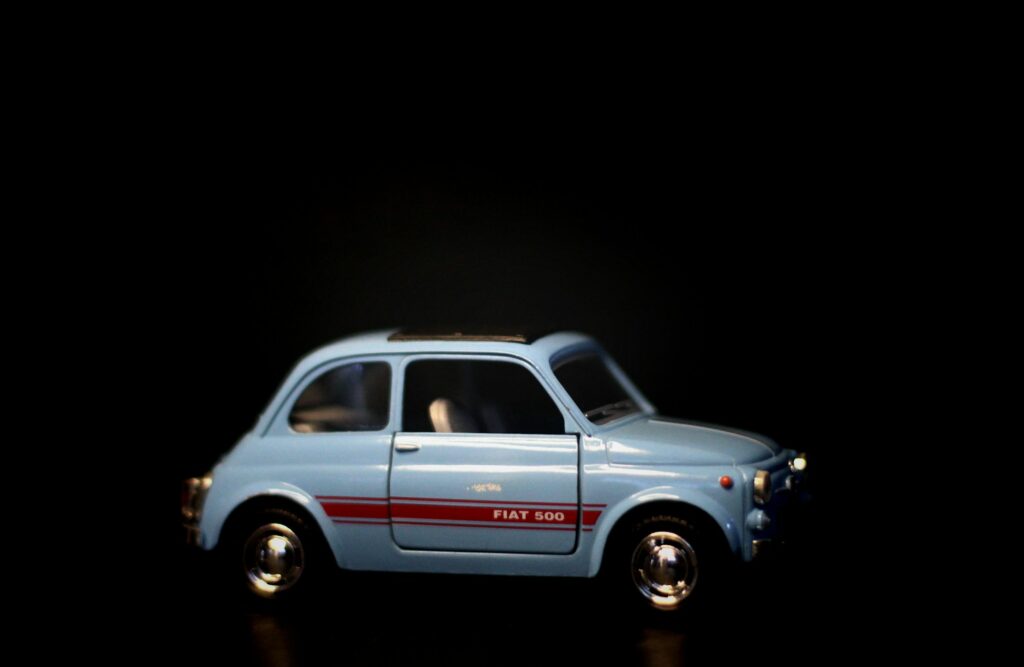
How Do You Start a Collection of 1/32 Scale Diecast Cars?
Starting a collection of 1/32 scale diecast cars can be an exciting and fulfilling hobby.
1. Define Your Focus and Interests
Before you start buying models, take some time to define your focus and interests. Decide what types of vehicles you are most interested in. This could be based on a specific era, brand, type of vehicle (e.g., classic cars, sports cars, trucks), or a theme (e.g., race cars, movie cars). Having a clear focus can help you build a cohesive and meaningful collection.
2. Research and Educate Yourself
Knowledge is key to making informed decisions. Spend time researching the 1/32 scale diecast car market. Learn about different manufacturers, popular models, and the characteristics of high-quality diecast cars. Websites, forums, and collector communities can be valuable resources for information. Books and magazines dedicated to diecast car collecting can also provide insights and guidance.
3. Set a Budget
Establish a budget for your collection. Diecast cars can vary significantly in price, so having a budget will help you manage your spending and prioritize your purchases. Decide how much you are willing to spend on individual models and on your collection as a whole. Remember to factor in additional costs such as display cases and storage solutions.
4. Start with a Few Key Pieces
When starting your collection, it’s a good idea to begin with a few key pieces. Choose models that you are passionate about and that fit within your focus and budget. Starting small allows you to build your collection gradually and gives you time to learn and refine your collecting strategy.
5. Buy from Reputable Sources
Purchasing from reputable sources is crucial to ensure the authenticity and quality of your models. Consider buying from established retailers, specialized diecast car shops, or directly from manufacturers. Online marketplaces can also be good sources, but be sure to check seller ratings and reviews. Auctions, both online and in-person, can be opportunities to find rare and unique models.
6. Pay Attention to Condition and Authenticity
When purchasing diecast cars, especially vintage or rare models, pay close attention to their condition and authenticity. Look for models that are in good condition with minimal wear and tear. Check for original packaging, as this can add to the value and authenticity of the model. Be cautious of counterfeit models and do your due diligence to verify the legitimacy of your purchases.
7. Display and Protect Your Collection
Properly displaying and protecting your diecast car collection is essential to preserving its value and appeal. Invest in quality display cases that protect the models from dust and damage while showcasing them attractively. Choose a display area that is safe from direct sunlight, excessive humidity, and temperature fluctuations. Consider using shelves, cabinets, or dedicated display cases to organize and display your collection.
8. Join Collector Communities
Joining collector communities can enhance your collecting experience. Engage with other collectors through forums, social media groups, and local clubs. These communities offer opportunities to share knowledge, exchange tips, and participate in events such as diecast car shows and swap meets. Networking with fellow collectors can also help you find rare models and gain insights into the market.
9. Document Your Collection
Keeping detailed records of your collection is important for organization and insurance purposes. Create a catalog or database that includes information such as the make, model, manufacturer, year of production, and any unique features of each diecast car. Include photos and notes about the condition and provenance of each model. This documentation can also be useful if you ever decide to sell or trade parts of your collection.
10. Stay Updated and Keep Learning
The diecast car market is dynamic, with new models and trends emerging regularly. Stay updated by following industry news, subscribing to magazines, and participating in online forums. Continuous learning will help you make informed decisions and keep your collection current and interesting.
11. Enjoy the Process
Finally, remember that collecting diecast cars should be a fun and enjoyable hobby. Take pleasure in the hunt for new models, the thrill of discovering rare pieces, and the satisfaction of building a collection that reflects your interests and passion. Enjoy the process, and let your collection evolve over time.
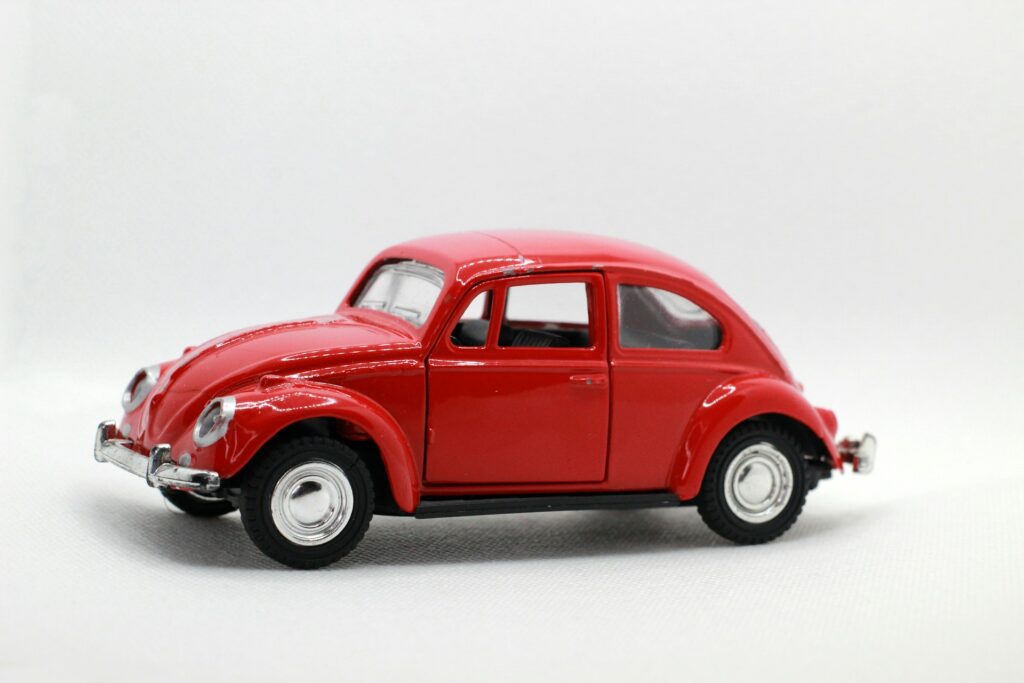
How Should You Display Your 1/32 Scale Diecast Cars?
Displaying your 1/32 scale diecast cars effectively can significantly enhance your enjoyment of the collection and ensure that each model is showcased to its best advantage.
1. Choose the Right Display Case
Investing in a quality display case is crucial. Display cases protect your models from dust, dirt, and potential damage while showcasing them attractively. There are various types of display cases to consider:
- Glass Display Cabinets: These are excellent for a comprehensive view of your collection. Glass cabinets with built-in lighting can highlight the details of your models and create an elegant display.
- Acrylic Cases: Individual or multi-car acrylic cases provide protection and visibility. These are great for displaying a few key pieces or a themed subset of your collection.
- Wall-mounted Shelves: Shelves with clear fronts can display multiple cars while keeping them accessible and visible.
2. Consider Lighting
Proper lighting can make a significant difference in how your collection is viewed. Use LED lights, which emit minimal heat and provide bright, clear illumination. You can integrate lighting into your display case or use external spotlights to highlight specific models. Avoid direct sunlight as it can cause paint to fade and plastic parts to become brittle over time.
3. Organize by Theme or Category
Organizing your collection by theme, category, or chronological order can enhance the visual appeal and coherence of your display. Some popular ways to organize include:
- By Manufacturer: Grouping models by car manufacturer can show the evolution of design and technology within a single brand.
- By Era: Displaying cars from different decades can create a historical timeline of automotive design.
- By Type: Separating classic cars, sports cars, trucks, and specialty vehicles can highlight the diversity of your collection.
- By Color or Style: Grouping cars by color or similar design elements can create a visually striking display.
4. Utilize Display Accessories
Enhance your display with accessories that add context and interest to your models:
- Dioramas: Creating small scenes or backgrounds that match the era or theme of the cars can add a dynamic and realistic touch.
- Display Stands: Use stands or risers to vary the height of your models within the display case, allowing all cars to be seen clearly.
- Mirrors: Incorporating mirrors at the back of display cases can give the illusion of depth and allow viewers to see different angles of the models.
5. Rotate Your Display
If you have a large collection, consider rotating the models on display. This approach keeps your display fresh and allows you to enjoy different parts of your collection over time. Seasonal rotations or themed displays can also add variety and keep the display engaging.
6. Maintain a Clean Display Area
Regularly dust and clean your display cases and models to keep them looking their best. Use soft, lint-free cloths and gentle cleaning solutions to avoid damaging the paint and detailing on the cars. Maintaining a clean display area ensures that your collection remains in pristine condition.
7. Personalize Your Display
Adding personal touches to your display can make it uniquely yours. Consider including informational plaques or labels that provide details about each model, such as the make, model, year, and any special features. Adding personal memorabilia, such as photos or certificates, can also enhance the display and add a personal connection to the collection.
8. Ensure Security
If your collection includes valuable or rare models, consider the security of your display area. Lockable display cases can protect your models from theft or accidental damage. Additionally, ensure that the display case is stable and placed in a location where it is unlikely to be knocked over or bumped.
9. Use Digital Displays
For a modern touch, consider integrating digital elements into your display. Digital photo frames or screens can be used to show images or videos related to your collection, such as historical footage of the cars, restoration processes, or events where the cars were featured. This multimedia approach can enhance the viewer’s experience and provide additional context for the models.
10. Create a Dedicated Display Space
If possible, create a dedicated space for your diecast car collection. This space could be a room, a corner of a room, or a specially designed cabinet. A dedicated space allows you to focus on creating an optimal display environment without competing with other household items. It also provides a sanctuary where you can fully appreciate and enjoy your collection.
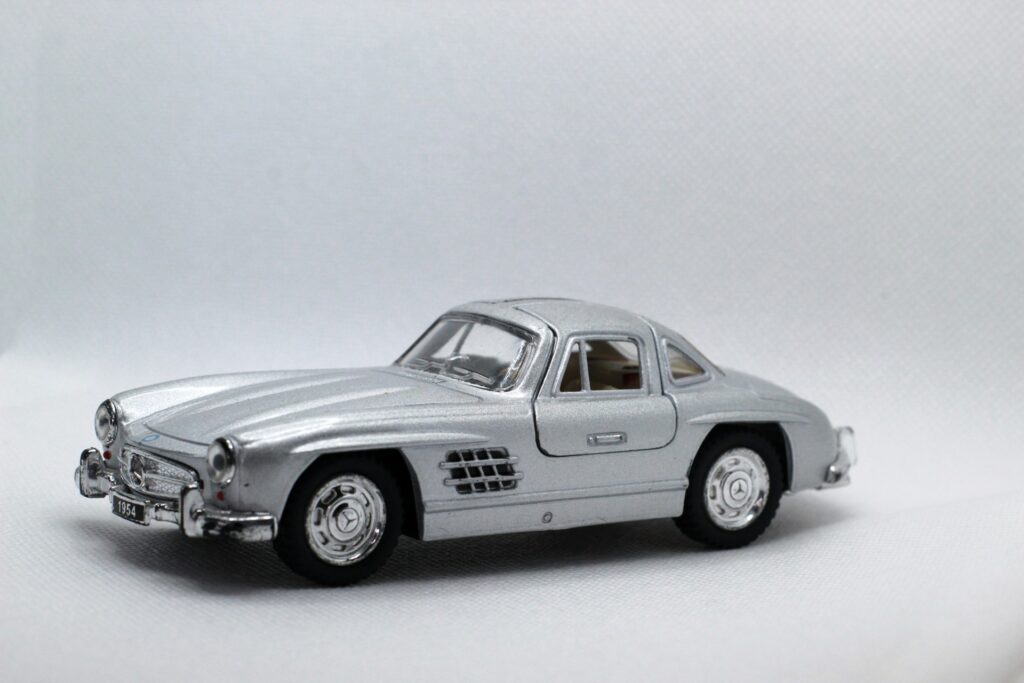
What Should You Look for When Buying 1/32 Scale Diecast Cars?
Purchasing 1/32 scale diecast cars can be an enjoyable and rewarding experience, but it’s important to know what to look for to ensure you are getting quality models that meet your expectations.
1. Manufacturer Reputation
Start by researching the reputation of the manufacturer. Well-known brands in the diecast car industry are often synonymous with quality and attention to detail. Companies like Minichamps, AUTOart, and GreenLight have built their reputations on producing highly detailed and accurate models. Checking reviews and feedback from other collectors can also give you an idea of the reliability and quality of a manufacturer’s products.
2. Detailing and Accuracy
Pay close attention to the level of detail and accuracy of the model. High-quality 1/32 scale diecast cars should accurately replicate the design of the original vehicle, including intricate features such as grilles, headlights, emblems, and body lines. Examine the paint job for consistency and quality, ensuring there are no visible flaws or imperfections. The interior should also be detailed, with realistic seats, dashboards, and other components that reflect the real car.
3. Functionality
Many collectors appreciate models that have functional features. Look for cars with opening doors, hoods, and trunks, as these add an interactive element to the model. Functional parts should operate smoothly and fit well without being overly loose or difficult to open. Additionally, check if the wheels are functional and if they turn or steer.
4. Materials and Build Quality
The materials used in the construction of the diecast car significantly affect its durability and overall appearance. The body of the car should be made from diecast metal, which provides weight and sturdiness. Plastic components are often used for parts like windows and interiors, and they should be of high quality, fitting seamlessly with the metal parts. Inspect the model for any signs of poor construction, such as gaps, misaligned parts, or weak joints.
5. Paint and Finish
A high-quality paint job is a hallmark of a good diecast model. The paint should be evenly applied, with no runs, bubbles, or uneven spots. The color should be true to the original car’s paint scheme. Glossy finishes should be smooth and reflective, while matte finishes should be even and consistent. Additionally, check for accurately applied decals and markings, which add to the model’s authenticity.
6. Limited Editions and Collectibility
Limited edition models can be more valuable and desirable to collectors. These are often produced in smaller quantities and may include special features or unique paint schemes. Check if the model is part of a limited edition series and whether it comes with a certificate of authenticity or unique numbering. Limited edition models can appreciate in value over time and add uniqueness to your collection.
7. Packaging and Presentation
The packaging of the diecast car is not only important for protection but also for display and storage. Look for models that come in sturdy, well-designed packaging that protects the car during shipping and handling. Original packaging can also enhance the model’s value, especially for collectors who prefer to keep their models in mint condition. Clear windows on the packaging allow you to inspect the car without opening the box.
8. Price and Value
While price is an important consideration, it should be balanced with the value you are getting. High-quality diecast cars can be more expensive, but they offer better detail, durability, and overall satisfaction. Compare prices from different sellers and consider the model’s rarity, brand reputation, and level of detail when evaluating its value. Sometimes, paying a little more for a superior model is worth the investment.
9. Seller Reputation
Ensure that you are buying from a reputable seller. Whether purchasing from a brick-and-mortar store, an online retailer, or an auction site, check the seller’s ratings and reviews. A trustworthy seller should have a history of positive feedback and be willing to provide detailed information and photos of the model. Avoid sellers with frequent complaints about poor quality or misleading descriptions.
10. Collectors’ Reviews and Recommendations
Collectors’ reviews and recommendations can provide valuable insights into the quality and desirability of specific models. Engage with online forums, social media groups, and collector communities to gather opinions and advice. Experienced collectors can offer tips on what to look for, which brands to trust, and where to find the best deals.
11. Future Maintenance
Consider the ease of maintaining the model in the future. Diecast cars can accumulate dust and may require occasional cleaning to maintain their appearance. Models with simpler designs and fewer moving parts can be easier to clean and maintain. Ensure that the materials used are durable and resistant to wear over time.
Enjoyed this guide of are 1/32 scale diecast cars worth collecting? Then be sure to check out our other RC Rating guides.